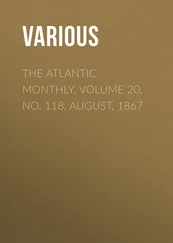The foregoing extract is taken from a book by the Rev. J. Spencer Northcote, called The Roman Catacombs, or some Account of the Burial-Places of the Early Christians in Rome : London, 1857. It is the best accessible manual in English,—the only one with any claims to accuracy, and which contains the results of recent investigations. Mr. Northcote is one of the learned band of converts from Oxford to Rome. A Protestant may question some of the conclusions in his book, but not its general fairness. Our own first introduction to the catacombs, in the winter of 1856, was under Mr. Northcote's guidance, and much of our knowledge of them was gained through him. Mr. Northcote estimates the total length of the catacombs at nine hundred miles; we cannot but think this too high.
For instance, about the middle of the fourth century, St. Julius, then Pope, is said to have begun three. See Marchi's Momumenti delle Arti Cristiane , p. 82.
The volcanic rocks are the Tufa litoide , very hard, and used for paving and other such purposes; difficult to be quarried, and unfit for graves on account of this difficulty. The Tufi granulare , a soft, friable, coarse-grained rock, easily cut,—fitted for excavation. It is in this that the catacombs are made. It is used for very few purposes in Rome. One may now and then see some coarse filling-up of walls done with it, or its square-cut blocks piled up as a fence. The third is the Pura pozzolana ,—which is the Tufa granulare in a state of compact sand, yielding to the print of the heel, dug like sand, and used extensively in the unsurpassed mortar of the Roman buildings.
There is one puzzling circumstance in the cemetery of S. Domitilla. All the graves in this cemetery are arcosolia , and yet the date of construction is early. The Cavaliere de Rossi suggests that the cemetery was begun at the expense of the Domitilla whose name it bears, the niece of Domitian, previously to her banishment; that her position enabled her to have it laid out from the beginning on a regular plan, and to introduce this more expensive and elaborate form of grave, which was continued for the sake of uniformity in the later excavations.
These chapels are generally about ten feet square. Some are larger, and a few smaller than this.
Revelations, vi. 9-11. It seems probable that another custom of the Roman Church took its rise in the catacombs,—that of burning candles on the altar; a custom simple in its origin, now turned into a form of superstition, and often abused to the profit of priests.












